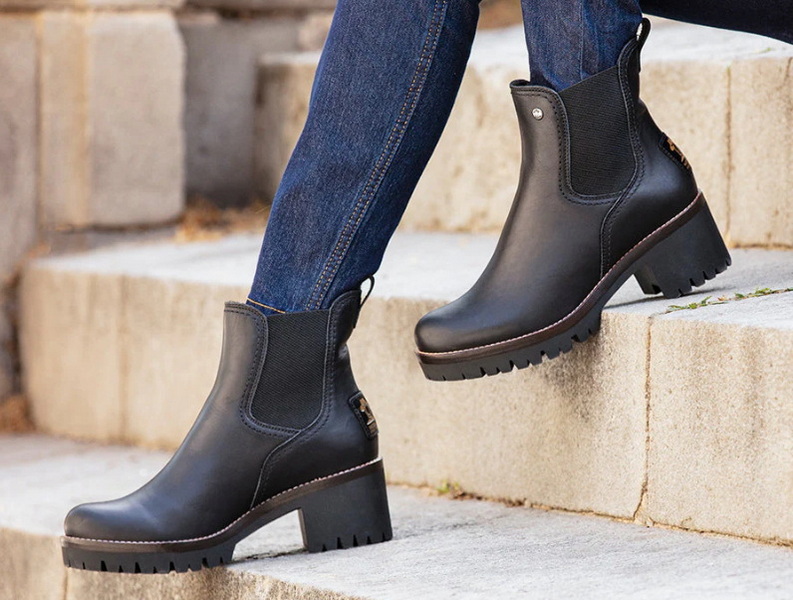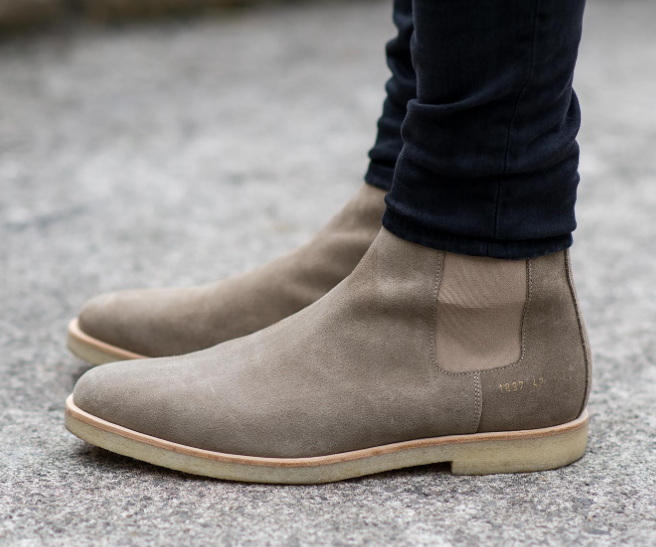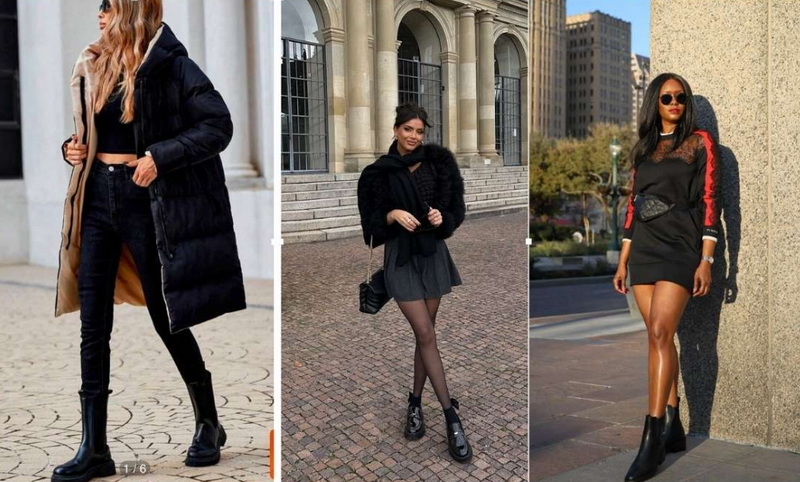Content Menu
● Understanding Shoe Sizing Systems
>> Men's vs. Women's Shoe Sizes: The Basics
>> Width Differences
● Anatomical and Design Differences
>> Foot Shape and Structure
>> Material and Construction
>> Style and Color
● Can Men Wear Women's Shoes?
>> Fit Considerations
>> When Does It Work Best?
>> Potential Fit Issues
● How to Find the Right Fit
>> Step-by-Step Guide
● Style Considerations for Men Wearing Women's Shoes
>> Why Choose Women's Shoes?
>> How to Style Women's Shoes as a Man
>> Tips for Confidence
● Practical Scenarios: When Men Wear Women's Shoes
>> Athletic Shoes
>> Formal Wear
>> Everyday Fashion
● The Rise of Unisex and Gender-Neutral Footwear
● Overcoming Social Barriers
● Conclusion
● FAQ
>> 1. How do I convert my men's shoe size to a women's size?
>> 2. Are women's shoes narrower than men's?
>> 3. Can men wear women's athletic shoes?
>> 4. Are there unisex shoes that fit both men and women?
>> 5. What are the main challenges men face when wearing women's shoes?
● Citations:
The boundaries of fashion are constantly evolving, and footwear is no exception. As more men explore styles and fits traditionally marketed to women, the question arises: Do women's shoes fit men? This comprehensive guide explores the technical, anatomical, and cultural aspects of men wearing women's shoes. We'll cover sizing conversions, fit differences, style considerations, and practical tips for men interested in expanding their footwear options. Whether you're seeking a specific colorway, a unique design, or simply a better fit, understanding the nuances of women's shoes for men is essential.

Understanding Shoe Sizing Systems
Men's vs. Women's Shoe Sizes: The Basics
One of the primary differences between men's and women's shoes is the sizing system. In the United States, women's shoe sizes are generally 1.5 sizes larger than men's for the same foot length. For example, a men's size 9 is typically equivalent to a women's size 10.5[1][2][7][8]. This conversion is not universal, however, and some brands may use a 1-size difference, so it's always important to check the specific brand's sizing chart[2].
Conversion Table Example:
| Men's US Size | Women's US Size |
| 7 | 8.5 |
| 8 | 9.5 |
| 9 | 10.5 |
| 10 | 11.5 |
Key Points:
- Always check the brand-specific conversion chart.
- International sizing systems (UK, EU, etc.) may differ, so consult conversion tables when shopping globally[1][4].
Width Differences
Another critical distinction is width. Men's shoes are typically wider than women's, with men's standard width being “D” and women's “B”[2][3][8]. The difference can be around 0.2 inches (5 mm) per size. Men with narrow feet may find women's shoes fit better, while men with wider feet may need to seek out women's wide-width options or stick to men's shoes[2][3].
Anatomical and Design Differences
Foot Shape and Structure
Men's and women's feet are shaped differently on average:
- Men's feet: Wider overall, especially in the heel and forefoot.
- Women's feet: Narrower heel, slightly wider forefoot relative to heel, and generally smaller overall[2][3].
These anatomical differences influence how shoes are designed:
- Women's shoes: Often have a narrower heel and midfoot, and sometimes a higher arch.
- Men's shoes: Built for a broader foot, with more volume in the toe box and midfoot.
Material and Construction
- Women's shoes often use lighter, more flexible materials, and may be designed for a sleeker aesthetic.
- Men's shoes tend to use more rigid materials and are constructed for durability and support[3].
Style and Color
Women's shoes offer a broader range of styles, colors, and embellishments. Men may be drawn to women's shoes for unique colorways or designs not available in men's lines[5][7].
Can Men Wear Women's Shoes?
Fit Considerations
Yes, men can wear women's shoes, but there are several considerations:
- Sizing: Convert your men's size to the equivalent women's size by adding 1.5 (US sizing)[1][2][7][8].
- Width: If you have wide feet, women's shoes may feel tight unless you opt for wide-width models[2][3].
- Shape: The overall fit may differ due to anatomical differences, especially in the heel and arch[2].
When Does It Work Best?
- Men with narrow feet: Women's shoes may provide a better fit.
- Seeking specific styles: Some colorways or designs are exclusive to women's lines[2][5][7].
- Unisex or functional footwear: Many sneakers, boots, and athletic shoes are designed to be unisex or have minimal gendered differences[7][8].
Potential Fit Issues
- Snugness: Women's shoes may feel tight in the toe box or across the midfoot for men with wider feet.
- Heel slippage: Men's heels may not be as secure in women's shoes due to the narrower heel cup.
- Arch support: The arch placement may not align perfectly, leading to discomfort over long periods.

How to Find the Right Fit
Step-by-Step Guide
1. Measure Your Feet: Use a Brannock device or a ruler to determine your foot length and width.
2. Convert Your Size: Add 1.5 to your men's US size to find your women's size (e.g., men's 9 = women's 10.5)[1][2][7][8].
3. Check Width: If you have wide feet, look for women's wide-width shoes or consider sizing up for comfort[2][3].
4. Try Before You Buy: Whenever possible, try shoes on in-store or order from retailers with good return policies.
5. Consult Brand Charts: Always check the manufacturer's sizing chart, as conversions may vary by brand[2].
6. Consider Purpose: For athletic shoes, hiking boots, or other performance footwear, prioritize fit and support over style.
Style Considerations for Men Wearing Women's Shoes
Why Choose Women's Shoes?
- Unique Styles: Access to a wider variety of colors, patterns, and designs[5][7].
- Fit for Narrow Feet: Better fit for men with slender feet.
- Fashion Statement: Blending masculine and feminine aesthetics for a bold, modern look[5][7].
How to Style Women's Shoes as a Man
- Sneakers: Pair pastel or floral women's sneakers with neutral outfits for a high-contrast, fashion-forward appearance[7].
- Heels: For those interested in breaking gender norms, pair women's pumps or stilettos with tailored suits or jeans for a striking look[5].
- Flats and Loafers: Women's loafers or ballet flats can be styled with slim-fit trousers or shorts for a sophisticated yet casual vibe.
- Boots: Women's boots, especially in unique materials or colors, can elevate a basic outfit.
Tips for Confidence
- Own Your Style: Confidence is key when wearing non-traditional footwear.
- Mix and Match: Combine feminine footwear with masculine clothing for balance.
- Accessorize: Use accessories to tie the outfit together and create a cohesive look.
Practical Scenarios: When Men Wear Women's Shoes
Athletic Shoes
Many athletic shoe brands produce unisex models or offer similar technology in both men's and women's lines. Men may choose women's running shoes for a specific color or fit, but should ensure proper support and comfort[2][7].
Formal Wear
Men seeking unique formal shoes, such as women's loafers or heels, should pay extra attention to fit, particularly in the toe box and heel.
Everyday Fashion
For casual wear, women's sneakers, sandals, or boots can be a great way to diversify your wardrobe. Just remember to convert sizes and check width.
The Rise of Unisex and Gender-Neutral Footwear
Many brands are responding to the growing demand for non-gendered fashion by offering unisex shoes. These are typically sized using men's sizing, but are designed to fit a broader range of foot shapes[7][8]. This trend is making it easier for everyone to find shoes that fit both their feet and their style preferences.
Overcoming Social Barriers
While practical considerations are important, societal perceptions can also play a role. Men may feel self-conscious shopping in the women's section, but online shopping and the normalization of gender-fluid fashion have made it easier than ever to explore new styles without judgment[5][8].
Conclusion
Do women's shoes fit men? The answer is a resounding yes, with some caveats. Men can wear women's shoes by converting sizes, considering width, and paying attention to fit and comfort. Women's shoes offer a diverse range of styles and colors, making them an attractive option for men looking to expand their fashion horizons. As the fashion world becomes more inclusive, the lines between men's and women's footwear continue to blur, offering everyone more freedom of expression.

FAQ
1. How do I convert my men's shoe size to a women's size?
To convert a men's US shoe size to a women's, add 1.5 sizes. For example, a men's size 9 is roughly a women's size 10.5. Always check the brand's specific sizing chart for accuracy[1][2][7][8].
2. Are women's shoes narrower than men's?
Yes, women's shoes are typically narrower, especially in the heel and midfoot. Men with wide feet may find women's shoes tight and should look for wide-width options or consider sizing up[2][3][8].
3. Can men wear women's athletic shoes?
Absolutely. Many athletic shoes are designed for unisex use, and men can wear women's models by converting sizes and ensuring proper fit. Pay attention to support and width, especially for running or high-impact activities[2][7].
4. Are there unisex shoes that fit both men and women?
Yes, many brands now offer unisex shoes, often sized using men's sizing. These are designed to fit a broader range of foot shapes and are a great option for those seeking gender-neutral footwear[7][8].
5. What are the main challenges men face when wearing women's shoes?
The main challenges are finding the right size and width, as women's shoes are generally narrower. Men may also encounter social stigma, but this is changing as fashion becomes more inclusive. Comfort and fit should always be prioritized[2][3][5][8].
Citations:
[1] https://www.size.ly/conversion-charts/womens-to-mens-shoes-size-chart
[2] https://runrepeat.com/guides/differences-mens-womens-running-shoes
[3] https://mallet.com/blogs/news/are-mens-shoe-sizes-the-same-as-womens
[4] https://www.size.ly/conversion-charts/mens-to-womens-shoes-size-chart
[5] https://coveti.com/men-who-wear-womens-shoes/
[6] https://fullscopesports.com/how-to-convert-womens-to-mens-shoe-size/
[7] https://tonefootwear.com/pages/can-men-wear-women-s-nike-sneakers-a-fit-style-guide
[8] https://www.chums.co.uk/blog/is-there-a-difference-between-mens-and-womens-shoes
[9] https://support.newbalance.com/s/article/NBUS-How-to-Convert-Your-Women-s-Shoe-Size-to-a-Men-s-Shoe-Size
[10] https://www.reddit.com/r/RunningShoeGeeks/comments/y6m2w0/experiences_buying_womens_shoes_as_a_man/
[11] https://flowfeet.com/content/15-mens-womens-us-shoe-size-conversion-calculator
[12] https://www.reddit.com/r/RunningShoeGeeks/comments/10b8tfc/is_width_the_only_difference_between_then_mens/
[13] https://shoecity.com/pages/shoe-size-chart
[14] https://kixszn.com/can-men-wear-womens-shoes/
[15] https://www.roadrunnersports.com/blog/women-to-men-shoe-size
[16] https://loomfootwear.com/blogs/news/can-men-wear-womens-shoes-top-5-reasons-why-it-can
[17] https://bootworld.com/blogs/advantage/the-difference-between-mens-and-womens-work-shoes
[18] https://www.zappos.com/c/shoe-size-conversion
[19] http://tt.tennis-warehouse.com/index.php?threads%2Fcan-men-wear-womens-shoe.215538%2F
[20] https://www.adidas.com/us/help/size_charts/men-shoes

















